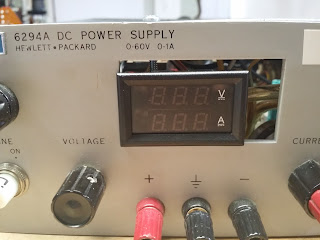I've written a number of MATLAB files to assist my work in Vulcan-CFD. Below, I've listed the code for each of these files.
Convert Plot3D files to Plot2D
clc; close all; clear all;
% input
d='C:\Users\John\Documents\Pointwise\backwardStepEx';
filename='backwardStepEx_rev1.x';
%% read in 2D(x=m,y=n,z=1) data
cd(d)
inputFile=filename;
outputFile=[filename(1:end-2) '_Plot2D.x'];
A0 = importdata(inputFile); %raw data
A=A0; %raw data to be trucated
% number of blocks in data
numBlocks=A(1);
% grab matrix sizes from the header
for i = 1:numBlocks
m(i)=A(2+(i-1)*3);
n(i)=A(3+(i-1)*3);
end
% throw away header info from A
A=A(2+numBlocks*3:end);
% grab x and y data from A and ignore z
for i = 1:numBlocks
N=m(i)*n(i);
x{i}=A(1:N);
A=A(N+1:end);
y{i}=A(1:N);
A=A(N+1:end);
A=A(N+1:end); %delete z
end
% set origin to bottom left.
xmin=x{1}(1);
ymin=y{1}(1);
for i = 1:numBlocks
for j=1:length(x{i})
if xmin > x{i}(j);
xmin = x{i}(j);
end
if ymin > y{i}(j);
ymin = y{i}(j);
end
end
end
for i = 1:numBlocks
x{i}(:)=x{i}(:)-xmin;
y{i}(:)=y{i}(:)-ymin;
end
%% plot data
% figure; hold on
% colors=['brkgc'];
% for i = 1:numBlocks
% plot(x{i},y{i},[colors(i),'+'])
% end
%% write 2D(x=m,y=n) data (with the single z value stripped out)
fileID = fopen(outputFile,'w');
% write number of blocks
fprintf(fileID,[num2str(numBlocks) '\r\n']);
% write matrix sizes for each block
for i = 1:numBlocks
fprintf(fileID,[num2str(m(i)), '\t', num2str(n(i)), '\r\n']);
end
% write x and y data for each block
for i = 1:numBlocks
p=x{i};
for k=1:2
if k==1
p=x{i};
else
p=y{i};
end
while(length(p)>=4)
% fprintf(fileID,[num2str(p(1)), '\t', num2str(p(2)), '\t', num2str(p(3)), '\t',num2str(p(4)), '\r\n']);
fprintf(fileID,'%1.15e\t%1.15e\t%1.15e\t%1.15e\r\n',p(1),p(2),p(3),p(4));
p=p(5:end);
end
if p~=0
for j=1:length(p)
fprintf(fileID,'%1.15e\t', p(j));
end
fprintf(fileID,'\r\n');
end
end
end
fclose('all');
beep
Add Zeros to Time History Files
% The time_merge script with Vulcan-CFD puts writes the files names with numbers that are not padded with zeros. (E.g. file_7.f instead of file_0007.f). Tecplot, however, has trouble determining the correct file order when importing if the buffer zeros are not present. This code adds the buffer zeros.
clc; close all; clear variables;
cd(uigetdir)
% cd('\\crunch6\John\circleVortexShedding\Time_files\Plot3d_files')
% read in all files with a *.f extension
firstFileList = dir('*.f');
% this next section of code further filters the list of files without a
% single '_' character.
j=1;
for i=1:length(firstFileList)
if length(findstr(firstFileList(i).name,'_'))==1
secondFileList(j)=firstFileList(i);
j=j+1;
end
end
files=secondFileList;
n=length(files);
m=length(num2str(n));
for i=1:n
oldname=files(i).name;
% find number between the '_' and '.' characters
num=oldname(findstr(oldname,'_')+1:findstr(oldname,'.')-1);
% buffer with zeros
while length(num)<m
num=['0',num];
end
%rename file
newname=[oldname(1:findstr(oldname,'_')),num,'.f'];
if strcmp(oldname,newname)==0
% dos(['rename "' oldname '" "' newname '"']); % (1)
movefile(oldname,newname);
end
end


